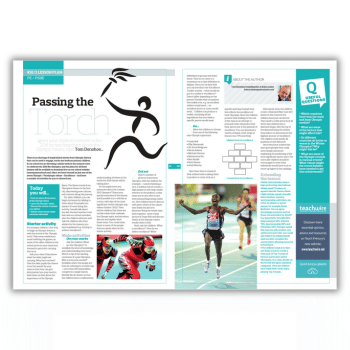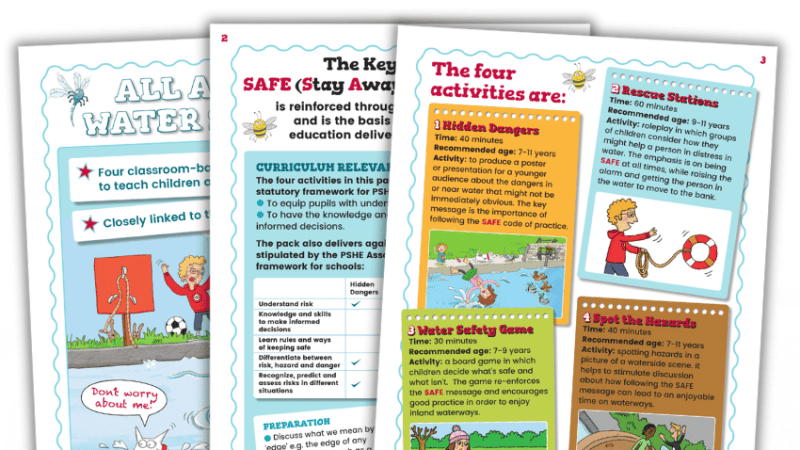5 strategies to cut the stress from your classroom

Dawn Ashbolt outlines some simple strategies that can put you back in control of your students’ behaviour, while boosting their learning and progress…

- by Dawn Ashbolt

It’s a conversation we’ve all had. Defeated by 9C for the third time that week, you stagger into the staff room and seek catharsis by telling the nearest colleague of your painstakingly planned lesson’s total failure – only for them to respond with, “9C? Oh. They seem fine for me…” Not very helpful!
All of us will aim to create a calm learning environment in each of our lessons, in which students are actively listening, enthusiastically engaged and fully ‘on board’ with the activities.
Whilst that does happen some of the time, most of us will admit that this isn’t always achieved. So if you’re looking for some simple ideas that have been proven to make those kinds of lessons a more frequent feature of your teaching, read on…
Strategy 1 | Stand and scan
‘Students listen when I’m explaining, but when I move on to the written task they chat, get distracted and do very little.’
You spend time carefully explaining the activity and telling the students what you want them to do. Great! Yet when you start the task, what do you do next? Do you…
- Dive straight at the first person talking to help them get working?
- Manically work your way around the room, trying to get each student on task?
- End up working harder than your students?
If any of the above apply, try this instead. Set the task and then don’t move. Instead, stand and scan the room for those who are off task, chatting, staring into space or who look confused. If you see lots of confused faces, could it be because they didn’t understand your explanation of the task? Was it detailed enough? Did it give enough structure to support all abilities?
If not, stop the activity and bring the class back together. Explain the task in three different ways, simplifying it as much as you can, and perhaps show them an example of a successful written outcome. Once they’re able to understand exactly what they need to do and what a successful outcome looks like, the students will be able to approach your task more positively.
If your explanation was clear, but you still you see chatting and staring into space, the ‘standing and scanning’ approach will enable you to better spot students who simply need to be told to stop talking and get on with the task. Using this method will allow you to get all students working before you head out into the room and start offering proper learning support to those who need it.
Strategy 2 | The dot
‘Instead of them procrastinating and taking 10 minutes to write one sentence, how do I get students to see the urgency in the task?’
This is a great technique for students who aren’t progressing appropriately in their written work because they aren’t using their time effectively. I was lucky enough to hear Mark Roberts and Matt Pinkett, authors of Boys Don’t Try, discussing this technique at ResearchEd London in September 2019, which can work in one of two ways:
- Place a dot on the page at a point you want the student to write up to within the time provided. This gives the student an obvious visual target to aim for, and gives you a clear way of seeing how much work they’ve done over the course of the lesson.
For the ‘dot technique’ to be effective, it’s necessary to set clear expectations of what you want to see from them and the consequences of them not meeting that standard (such as not reaching the dot).
Strategy 3 | The clock
A simple timer – be it a physical device or a software app displayed in front of class – provides a quick and easy way of adding a sense of urgency that can help keep students on track. As well as communicating the necessary idea to students that time is precious, writing under timed conditions also adds an element of competition to the activity.
Needless to say, it’s also a useful technique during exam preparations, demonstrating to students what those time pressures will feel like in practice and familiarising them with how much they’ll be expected to write in the time available.
Strategy 4 | The seating plan
“Lots of ‘naughties’ in this class make it difficult to control”
Moving disruptive students during a lesson can work, but it’s often an intervention that arrives too late and can even lead to further confrontation and disruption. Instead, start seeing your seating plan as a key technique within your behaviour strategy.
The phrase I use is ‘keep your enemies close’. I know that sounds harsh, as your students aren’t really your enemies, of course, but it can feel like that sometimes! Manage those especially tricky students by seating them at the front of the room, facing you. Difficult students will regularly sit at the back, often facing away from you, thus enabling them to disengage and disrupt more easily. Sitting them at front lets you spot issues instantly and effectively intervene.
It’s also great for allowing you to award praise quickly and provide support before they lose focus. Make sure you maintain the seating plan you’ve drawn up, as some students will try to move surreptitiously or cajole you into letting them sit somewhere else. Remember, you are in control. Respond to every request to move with a consistent “no.”
Strategy 5 | Pairing up
‘Whenever I attempt group work activities, the classroom ends up too noisy and some do very little work. Should I persist in using group work?’
Group work is one of the trickiest of all areas to get right. How can you ensure every student is participating meaningfully and making progress? If your class tends to lose focus when working in groups, try starting with pairs first.
To facilitate a paired discussion, start with a think pair share scenario. Have the pupils initially think about the task individually, before announcing the pairs that you’ve chosen and then encouraging each pair to share their ideas by discussing them with one another. An effective pairing strategy will bring about a situation where both students are required to contribute, making it simple to spot anyone who doesn’t seem to be working easily.
If all goes well, you could then ask two or more pairs to combine and share their ideas, therefore resulting in a group that actually works!
Dawn Ashbolt is an assistant principal and director of teaching and learning at Wrenn School.











